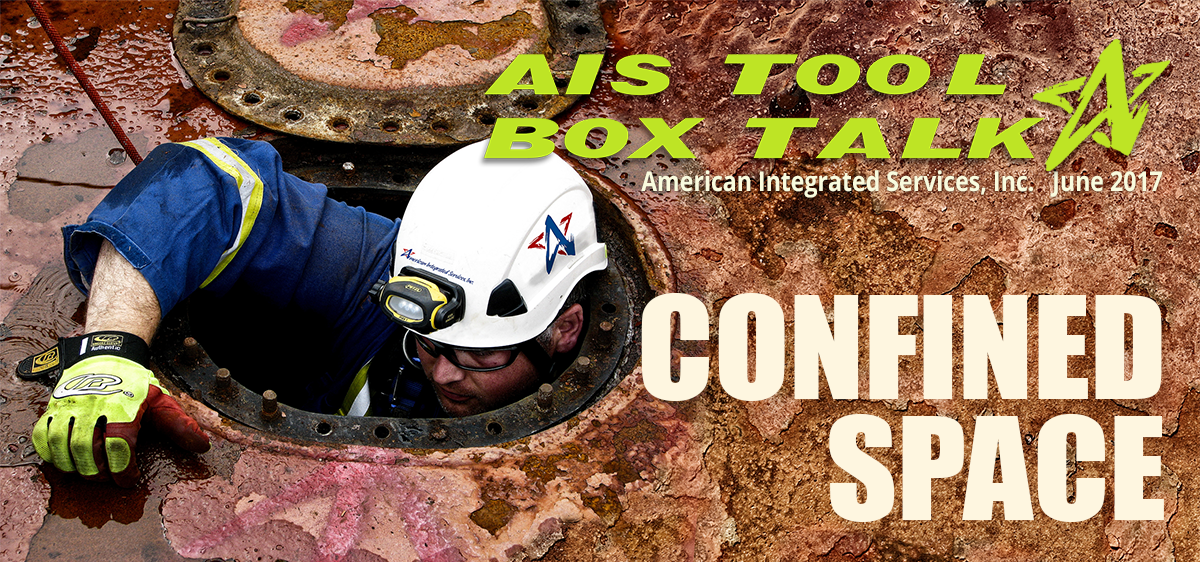|
Last month, Cal/OSHA sited two Los Angeles construction companies $352,570 for multiple workplace safety and health violations, including ten serious and three willful category violations, following a fatal incident in a confined space. Neither company followed permit-required confined space procedures and a worker lost his life while attempting to clear mud and debris from a drainage shaft. (https://www.dir.ca.gov/DIRNews/2017/2017-35.pdf) This is a tragic reminder that confined space work presents a unique set of hazards, and specific procedures must be developed and followed for every entry.
What is a confined space? A space must meet all of the following criteria to be considered a confined space:
When is a Confined Space Entry Permit Needed? If any of the hazards listed below are present, a permit is required for entry. Remember that certain work activities in a confined space can also necessitate a permit. Atmospheric Hazards
Internal configurations that could entrap or asphyxiate an entrant by inwardly converging walls, or floors that taper to a smaller cross-section, i.e. hoppers, bins and tanks Engulfment Hazards Where there is a potential for a liquid or solid material to drown, capture or asphyxiate an entrant, i.e. water, grains and soils Other Hazards Other hazards may include electrical hazards, chemical hazards, extreme temperatures, slippery floors and noise. Working Safely in Confined Spaces First, avoid entry into confined spaces whenever possible. If they must be entered, Cal/OSHA has regulations for working safely in confined spaces. Please refer to the specific standard for your industry and operations. For general industries such as manufacturing facilities, T8CCR 5157, “Permit-Required Confined Spaces” requirements apply. For employers and employees in Construction, Agriculture, Marine Terminals, Grain Handling, Telecommunications, Natural Gas and Electric Utilities, and Shipyard Operations, the regulations in T8CCR 5158, “Other Confined Space Operations” and other regulations apply. In general, confined space regulations require all employers to have:
Sources and further information: www.dir.ca.gov/dosh/Confined_Space_Emphasis_Program.html https://www.cdc.gov/niosh/docs/86-110/ https://www.osha.gov/pls/oshaweb/owadisp.show_document?p_table=PREAMBLES&p_id=839 https://www.osha.gov/Publications/OSHA3849.pdf https://www.dir.ca.gov/dosh/dosh_publications/ConfinedSpaceHazardAlert.pdf 2/22/2021 11:55:00 pm
You made a good point when you shared that it is important to follow all the regulations that have been stated by OSHA when working in a confined space. This to ensure that any accidents or hazards can be avoided. I would like to think if a company needs to work in a confined space, it should look for a reliable service that can conduct a rescue in case anything happens. 6/9/2022 07:35:05 pm
It was fascinating to know that having a documented confined space plan is required for all employers. My friend wants to ensure that their employees are trained for confined space entry. I think he should book a confined space entry training for his employees to ensure they comply with all confined space regulations 1/8/2023 09:20:40 pm
Working in confined spaces can be a risky job and should only be attempted by those with the correct training and equipment. Every effort should be made to minimize risks, follow safety procedures and use proper protective measures. It is important for workers to remain aware of their surroundings and take steps to reduce potential hazards. Employers should ensure that all personnel are trained on safety protocols and have the necessary equipment for working in restricted areas. 4/12/2023 12:03:25 pm
It's helpful to know that OSHA has regulations for working in confined spaces. Not long ago, my uncle mentioned he's starting a new construction project, but he's worried about working in confined spaces, so I'll make sure he reads your post now. I appreciate your information on what kind of permits you'll need to work in confined spaces. Comments are closed.
|


6/20/2017